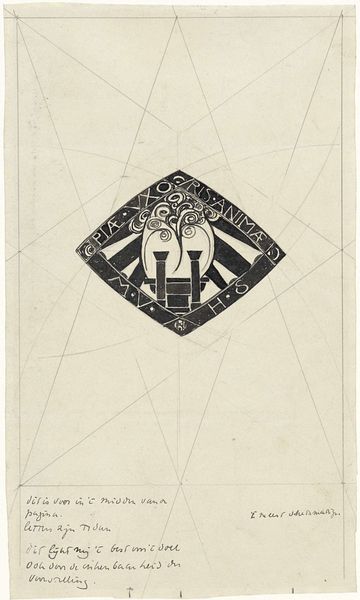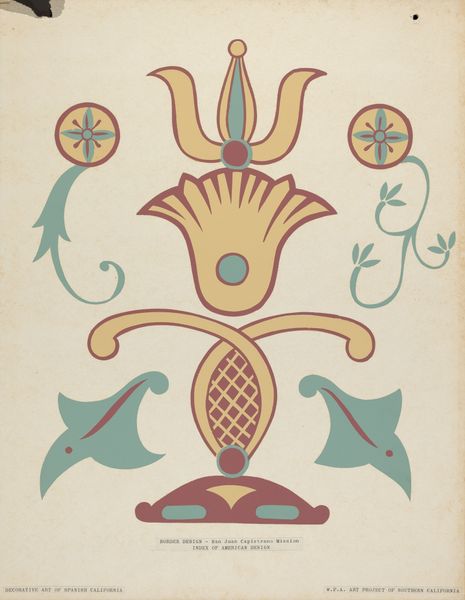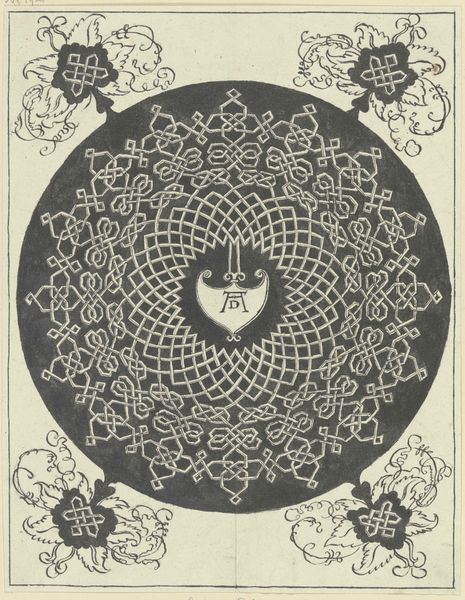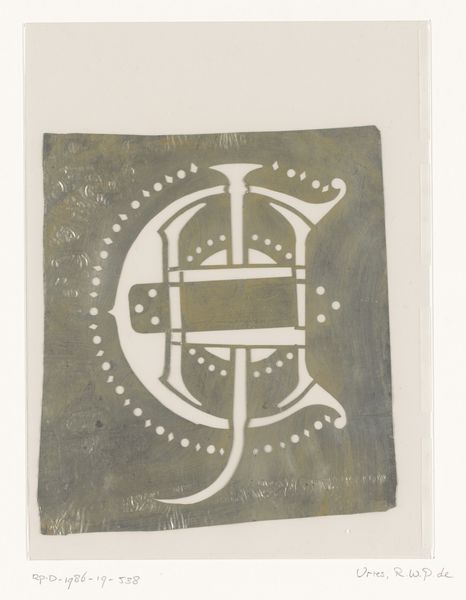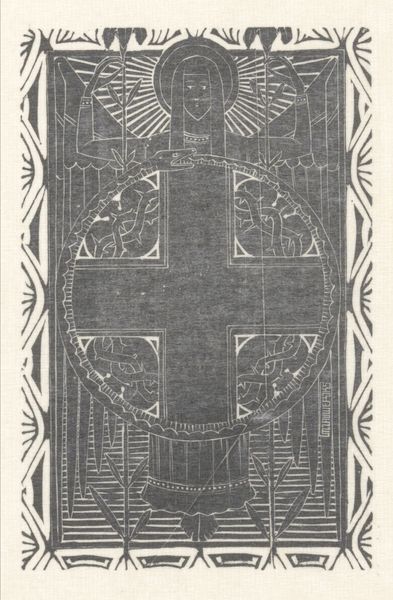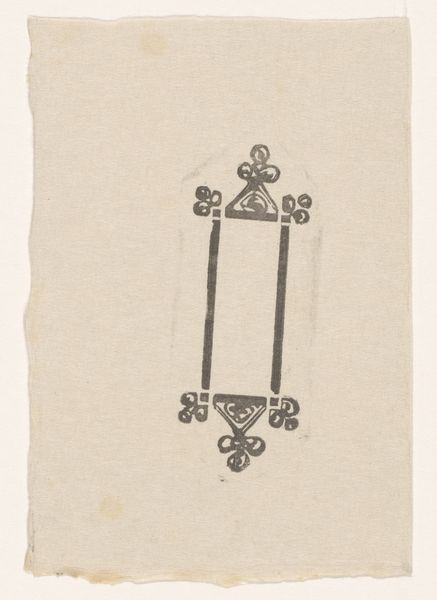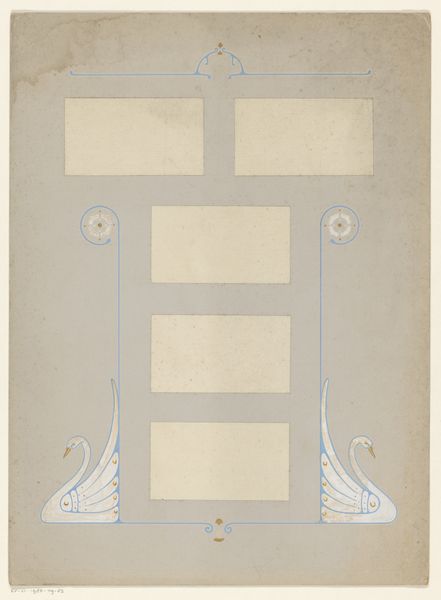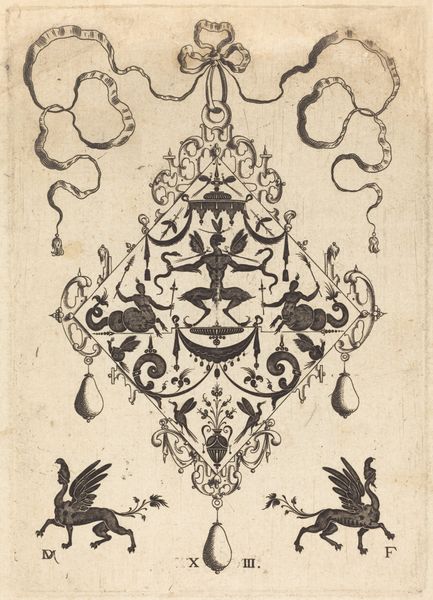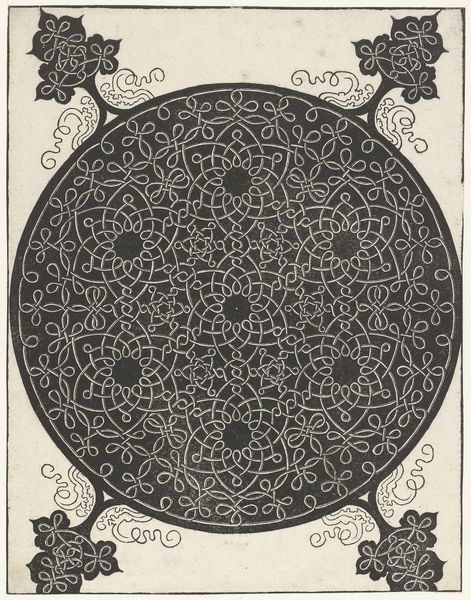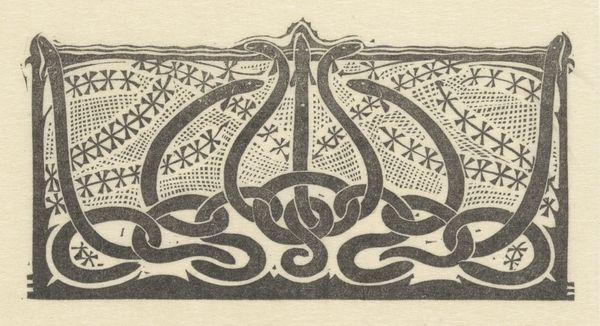
drawing, paper, ink
#
drawing
#
art-nouveau
#
paper
#
form
#
ink
#
geometric
#
abstraction
#
line
Dimensions: height 130 mm, width 65 mm
Copyright: Rijks Museum: Open Domain
Editor: So, here we have Samuel Jessurun de Mesquita's "Ornament met cirkel en kruis" from around 1905, an ink drawing on paper. The geometric patterns feel very rigid and formal. I’m curious, what’s your take on the context surrounding a piece like this? Curator: It’s interesting you pick up on that rigidity. Around 1905, there was a real tension between the burgeoning abstract art movements and the traditional expectations for public art. Works like this were often commissioned or created for specific architectural spaces. Do you think this design intends to make any social commentary? Editor: That’s a great question. I hadn’t considered that. At first glance, it just seemed like an exercise in geometric forms. But with that architectural aspect, it reminds me a bit of some Art Deco motifs… Was Art Nouveau moving away from organicism at this time? Curator: Yes, absolutely! By the early 20th century, some Art Nouveau artists were indeed moving towards more simplified, geometric forms, which would later feed into movements like Art Deco. This piece suggests a move towards incorporating industrial aesthetics. The black ink enforces the mechanical reproducibility so central to socio-political art. Do you find its symbolism striking? Editor: Thinking about that tension, between nature and industry, is helpful for contextualizing it. I'm understanding how even seemingly ‘abstract’ forms carry their own cultural baggage and how Art Nouveau became this unique link between past and present! Curator: Exactly. It encourages you to analyze forms for social patterns!
Comments
No comments
Be the first to comment and join the conversation on the ultimate creative platform.

